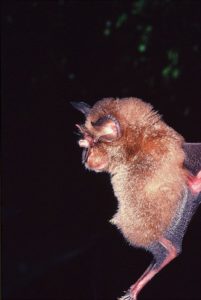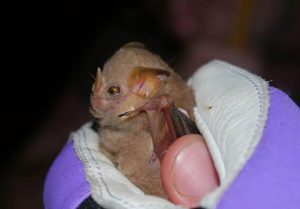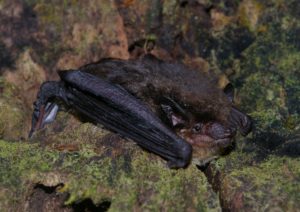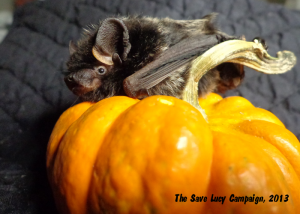
We want to thank Blogger Rachael on her 51st blog post this year! She’s featured almost 30 species. Thank you Rachael. We’re looking forward to what you discover in 2019! Hi everyone! I hope you all had a very Merry Christmas and are enjoying your winter holidays. I am enjoying my school vacation very much. Since this is my last blog post of the year, I thought it would be nice to look back at all that happened this year. It’s been a rather long year that began with the Winter Olympics in Pyeong Chang, South Korea and is ending with a tsunami and volcanic eruptions in Indonesia. In between, there were hurricanes, wild fires, earthquakes, and more volcanic eruptions. It sounds like a bad year, but there were also some good things that happened. Over the summer, 12 members of a youth soccer team and their coach were rescued from an underground cave in Thailand. Not only did we have the Winter Olympics this year, but we also came together for the World Cup in July. And, in what is possibly the cutest news story of the year, an adult male koala needed to be rescued for the third time in his life when he got his head stuck in a fence in South Australia. And now, since the people of Indonesia are having such a difficult time, I thought I’d research another Indonesian bat. I found an adorable leaf nosed bat called the Arcuate horseshoe bat. They were discovered by Wilhelm Peters in 1871. He gave them the name “arcuatus” which is Latin for “curved”. Peters never said why he decided to name these bats curved, but some scientists believe that it is due to the curve of their nose. These adorable furry critters live in Southeast Asia, […]

Hi everyone! I hope you all had a good week! I had a fantastic week because it was the last week of school before winter break! I am going to enjoy the next two weeks by sleeping late and celebrating the holidays with my family. Since it is the Christmas season, I decided to write this week’s blog on a bat that, in my opinion, looks very similar to the Grinch. It took some looking but I found an adorable critter called the Little White-shouldered bat. These bats have leaf shaped noses that resemble the Grinch’s famous smirk. They have brownish-gray fur with striking white shoulders that give them their name. They also have yellow eyes that look so cool! Little White-shouldered bats have big, almost see-through, ears that look adorable atop their small heads! Not a lot of information has been collected on what these bats eat, but scientists have looked at the teeth of Little White-shouldered bats and concluded that they probably eat insects like most bats in America. They live in Central America into Brazil, Guyana, Venezuela, Trinidad, and Bonaire Island. These bats like to roost in tropical forests near streams. They are typically found in evergreen forests. If you want read more about Little White-shoulder bats you can do so here. I also found a very cute story about how bats saved Christmas. If you would like to read it, you can find it here: I hope everyone has a very Merry Christmas!

Hi everyone! I hope you all had a good week! I am excited that Winter Break is coming soon. Sadly, I have to wait another week to get my vacation. I found a very interesting article on bats regarding their hunting strategies and how they vary from species to species. An international group of biologists set out to compare five different bat species. They studied a total of 94 bats. The scientists fixed each bat with a tiny recording device to look at their flight path and listen to what noises they made. The researchers used this information to discover where the bats found food and whether or not other bats were nearby. They looked at 2 species of bats that hunted socially for prey, such as swarms of insects or fish, who are found in unpredictable locations. Then they looked at three species that foraged for food alone and whose prey was always at the same location and could be found easily. The bats that foraged alone ate things like fruit and tried to separate themselves from others. If other bats were around it could create a competition for food. The bats that foraged together were much more social. The researchers found that these bats tended to eavesdrop on the other bats feeding calls and were constantly communicating with others of their own species to see if they had found food. When one bat found food to eat, others followed close behind and hunted behind them. In order to test if the bats were truly hunting together for the food, the scientists placed three recording devices around where the bats hunted. One recording device played white noise, one played a normal bat call, and one played a bat’s feeding call. When the bats heard the white noise, they mainly ignored the recording. When they heard the normal call they began to investigate, […]

Hi everyone! I hope you all had a good week! I’m excited because it’s almost Christmas! I found a very interesting article about a group of scientists in Uruguay who are creating a special AI algorithm that will help in identifying bats flying around! This is important because bats in South America speak different dialects than the same species in North America. So, the databases in use in North America don’t work in Uruguay or the rest of South America. This new algorithm will be able to pick up a bat’s call through a microphone and determine which species it is. This algorithm was first created to help scientists learn which bats were flying into windmills. This information could then be used to work with wind farm operators to help protect bats. Studies have shown that more than 40 bat species are affected by windmills and almost 300 mass bat death events have occurred due to wind turbine blades. Until now, scientists needed to catch bats flying in an area in order to identify them. With this algorithm, the very difficult and time-consuming task of catching a bat is no longer necessary. In addition to being used to help scientists protect bats from wind turbines, this algorithm could be used to identify unknown bat species. Hopefully the use of this algorithm will help scientists locate a bat that has been believed extinct in Uruguay for 50 years. If you would like to read more about this study, you can find information here. .

Hi everyone! I hope you all had a good week. My week started with my dog’s birthday. We’ve been celebrating and spoiling her all week. Yesterday, there was an earthquake in Alaska. I decided to research an Alaskan bat. I found an adorable bat called the Silver-haired bat. The Silver-haired bat lives in the temperate rain forests of Southeast Alaska. Actually, these bats live throughout the United States, including Save Lucy’s state of Virginia, and southern Canada. The Silver-haired bat has black fur all over its body except for their ears. The black fur on their back has silver tips which makes the bat look like it has a back full of silver fur. These bats also have short round and hairless ears that lay close to their head. Like all bats in North America, these bats are insectivores. They love to munch on an assortment of meals such as flies, moths, mosquitoes, beetles, ants, and crickets. Silver-haired bats like to roost near water in areas near lakes, ponds, and streams. They roost here because they hunt close to the water where there is an abundance of tasty bugs for them to crunch on. They roost in tree foliage, under loose bark, and sometimes buildings. They like to hibernate under loose bark and in tree hollows. If you would like to learn more about the Silver-haired bat, you can read about them here and here.




